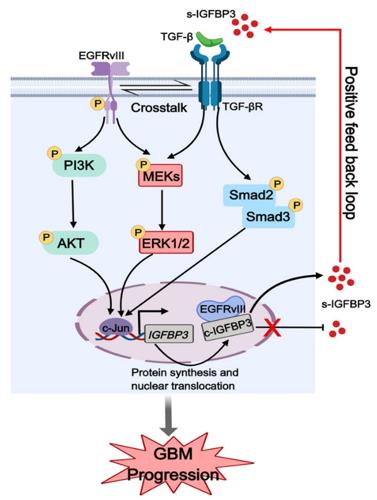What is IGFBP3 Protein
IGFBP3, or Insulin-Like Growth Factor Binding Protein 3, stands at the forefront of cellular regulation and growth modulation within the human body. This essential protein, also known by the synonyms BP-53, IBP-3, and IGFBP-3, belongs to the insulin-like growth factor-binding protein family.
IGFBP3 Protein Structural Characteristics and Classification
IGFBP3 is a glycoprotein characterized by its binding affinity with insulin-like growth factors (IGFs), particularly IGF-1 and IGF-2. The protein is primarily produced in the liver but can be found in various tissues throughout the body. Structurally, IGFBP3 consists of approximately 264 amino acids, forming a distinctive structure that allows it to interact with IGFs with high specificity.
Recent Research Advances about IGFBP3 Protein
Recent research has shed light on the multifunctional roles of IGFBP3, extending beyond its traditional involvement in growth regulation. Studies have explored its potential implications in cancer, metabolic disorders, and immune response modulation. The intricate interplay of IGFBP3 with other cellular components is gradually unraveling, providing new avenues for therapeutic interventions and diagnostic advancements.
IGFBP3 Biological Functions and Molecular Mechanisms
IGFBP3 exerts its biological influence through a variety of mechanisms. Its primary role lies in binding and modulating the activity of IGFs, thereby regulating cell growth, differentiation, and apoptosis. By acting as a molecular liaison, IGFBP3 influences the availability and bioactivity of IGFs in the cellular environment.
IGFBP3 regulates cell fate by both IGF-dependent and IGF-independent pathways. In an IGF-dependent manner, IGFBP3 inhibits the binding of IGFs to their receptors, attenuating downstream signaling cascades associated with cell proliferation. Conversely, IGF-independent actions involve interactions with other cellular components, impacting processes such as apoptosis and senescence.

Figure 1. IGFBP3 induced by the TGF-β/EGFRvIII transactivation. (Zhang X, et al., 2023)
IGFBP3 Related Signaling Pathway
The intricate signal pathways associated with IGFBP3 underscore its versatile nature in cellular regulation. The IGFBP3-IGF axis plays a pivotal role in the PI3K/Akt and MAPK pathways, influencing cellular processes such as survival, proliferation, and differentiation. Dissecting these pathways offers valuable insights into potential therapeutic targets for diseases linked to IGFBP3 dysregulation.
IGFBP3 Related Diseases
The dysregulation of IGFBP3 has been implicated in various diseases, making it a potential biomarker for diagnostic and prognostic purposes. In cancer, altered levels of IGFBP3 have been associated with tumor growth and metastasis, emphasizing its significance in oncology. Furthermore, studies suggest a potential link between IGFBP3 deficiency and conditions such as diabetes and cardiovascular diseases, highlighting the protein's broader implications in metabolic health.
IGFBP3's Applications in Biomedicine
IGFBP3's diverse functions have spurred interest in its applications across various biomedical fields.
- Diagnostic Development
The unique expression patterns of IGFBP3 in different diseases position it as a promising diagnostic marker. Detecting aberrations in IGFBP3 levels could serve as an indicator for conditions ranging from cancer to metabolic disorders, facilitating early and precise diagnoses.
- Vaccine Development
Understanding IGFBP3's involvement in immune modulation opens avenues for vaccine development. Targeting IGFBP3 may enhance the immune response against certain diseases, potentially contributing to the development of more effective vaccines.
- Therapeutics
Exploiting IGFBP3's regulatory role in cell growth presents therapeutic opportunities. Modulating IGFBP3 levels or activity could be a strategy in cancer treatment, where controlling cell proliferation is a key objective. Additionally, interventions targeting IGFBP3 may hold promise in managing metabolic disorders and cardiovascular diseases.
Recommended Products
| Cat.No. | Product Name | Species | Source (Host) | Tag |
|---|---|---|---|---|
| IGFBP3-14107H | Recombinant Human IGFBP3, GST-tagged | Human | E.coli | GST |
| IGFBP3-2716H | Recombinant Human IGFBP3 protein, His-tagged | Human | HEK293 | His |
| IGFBP3-828H | Recombinant Human IGFBP3 protein, His-tagged | Human | E.coli | His |
| IGFBP3-80H | Recombinant Human IGFBP3 protein | Human | E.coli | N/A |
| IGFBP3-758H | Recombinant Human IGFBP3, His tagged | Human | Human Cell | His |
| IGFBP3-26377TH | Recombinant Human IGFBP3 | Human | N/A | |
| IGFBP3-110I | Active Recombinant Human IGFBP3 Protein (264 aa) | Human | E.coli | |
| IGFBP3-4260H | Recombinant Human IGFBP3 Protein (Gly28-Lys291), N-His tagged | Human | Mammalian cells | N-His |
| IGFBP3-4353H | Recombinant Human IGFBP3 Protein, His (Fc)-Avi-tagged | Human | HEK293 | His (Fc)-Avi |
| IGFBP323022H | Recombinant Human IGFBP3 Protein | Human |
Reference
- Zhang X, et al. IGFBP3 induced by the TGF-β/EGFRvIII transactivation contributes to the malignant phenotype of glioblastoma. Iscience. 2023, 26(5).

